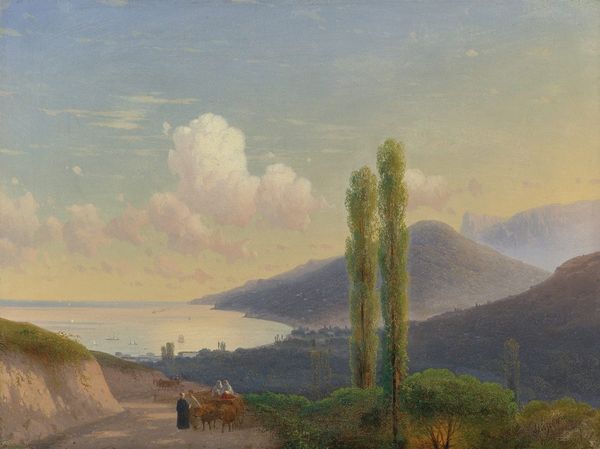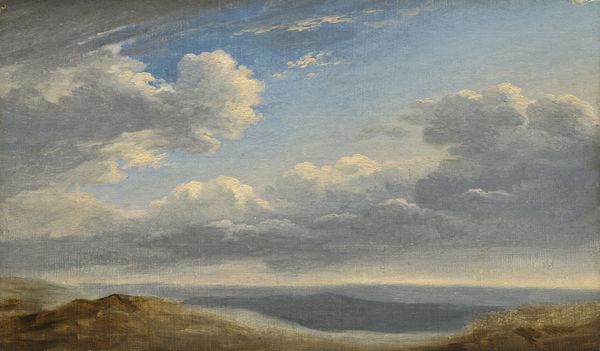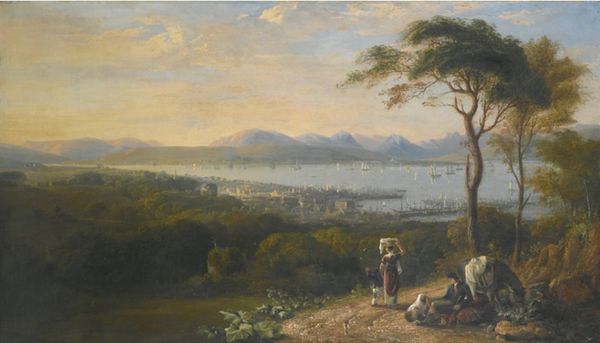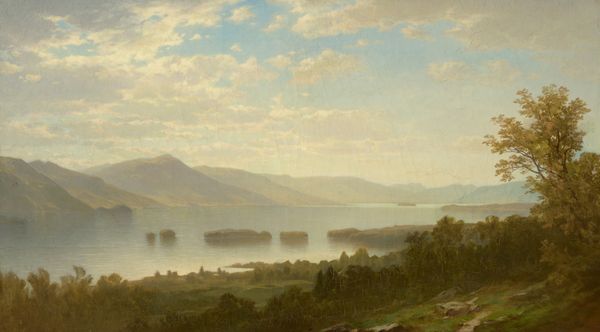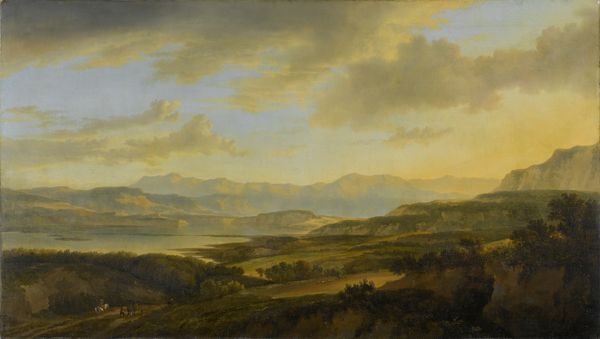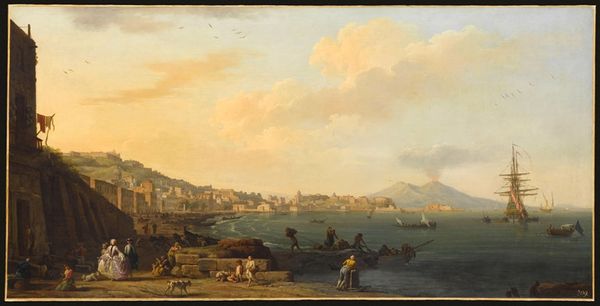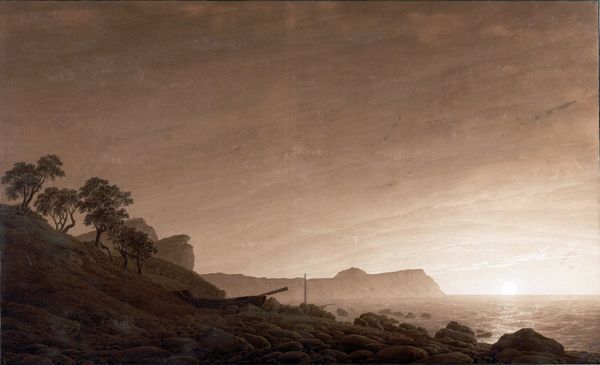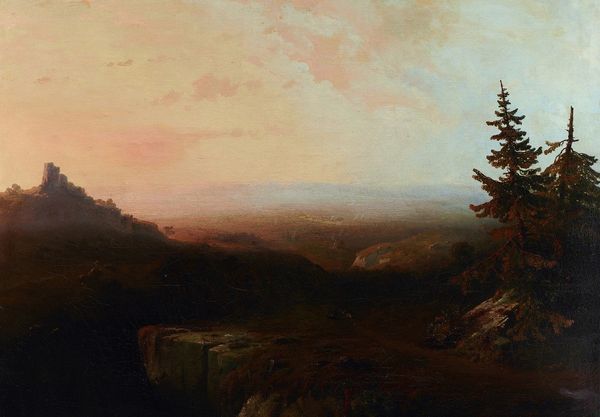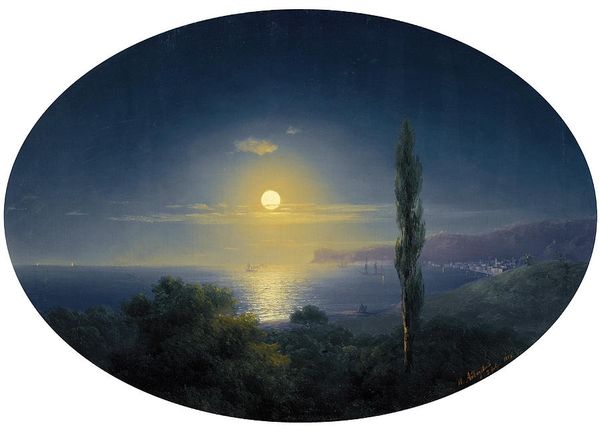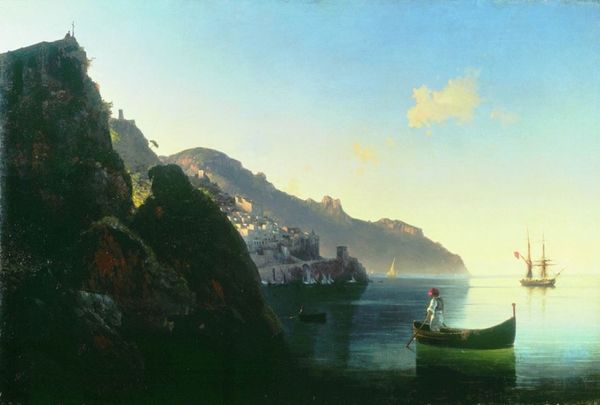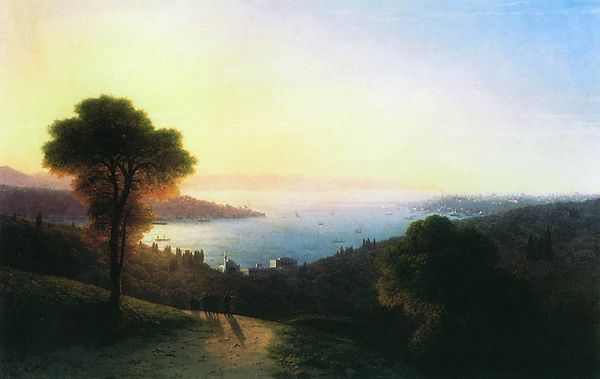
painting, plein-air, oil-paint, canvas
#
painting
#
plein-air
#
oil-paint
#
landscape
#
nature
#
canvas
#
romanticism
#
fog
#
cityscape
#
watercolor
#
realism
#
mist
Dimensions: 15 cm (height) x 28.5 cm (width) (Netto), 25.9 cm (height) x 40 cm (width) x 7 cm (depth) (Brutto)
Curator: This work by J.C. Dahl, completed around 1820, presents a view of the landscape from the hills above Castellamare at Naples. It's oil on canvas, demonstrating Dahl's keen interest in capturing atmospheric effects en plein air. Editor: It's quite subdued, almost melancholic. The haze and soft lighting lend a sense of mystery to the city nestled by the sea. What I notice most are the visible brushstrokes—a direct trace of the artist’s hand and intention, of labor enacted to portray something truly present in life. Curator: Absolutely. And while the atmospheric perspective is crucial, we need to examine how it places us, the viewers, in relation to the scene. This isn't just a beautiful landscape; it's about the relationship between the natural world and burgeoning urban spaces. We must question what a privileged painter, in 1820, sees when he gazes at Naples, right? Consider the sociopolitical tensions simmering beneath the surface of such apparently 'idyllic' scenes. Editor: Precisely. Look at the pigment choices. The hazy blue is mixed to resemble smoke or fog, and if you follow it, it directly calls out to question who produces this element, where do these emissions come from? The work itself seems to speak to how the labor practices involved in industrial manufacturing directly lead to the kind of environmental obfuscation seen within the art. Curator: Moreover, the lone figure on the path introduces another layer. Is he a shepherd, a traveler, or something else entirely? How does this isolated figure reinforce or challenge our reading of nature in the frame? Is the material consumption visible elsewhere affecting him as well? Editor: He seems separated and apart. As the painting’s focal point he represents both possibility, perhaps setting forth to embark toward a new labor; however, he can also represent alienation. The way his isolation contrasts with the distant city tells us so much about work as it becomes visible to us in the urban environment and in romantic terms! The application of pigment tells this tale in a compelling way. Curator: Considering Dahl's own background and the broader context of Romanticism, his work becomes an interesting commentary on class, industrialisation, and the perception of nature and those who would engage and interact with it. Editor: By attending to Dahl’s process we begin to truly appreciate the complexity and layers within something initially seeming so "simple." Thanks to Dahl's choice of oils and canvas, combined with a particular composition, labor issues emerge through a mist!
Comments
No comments
Be the first to comment and join the conversation on the ultimate creative platform.
